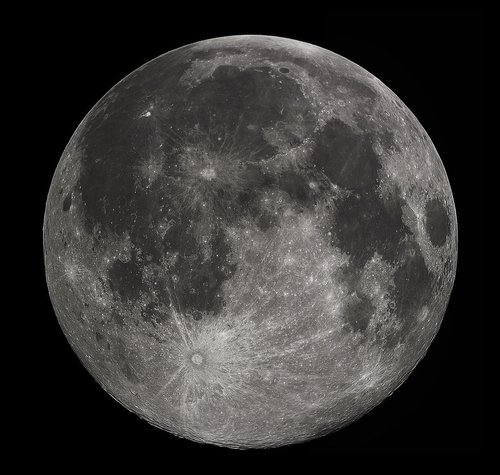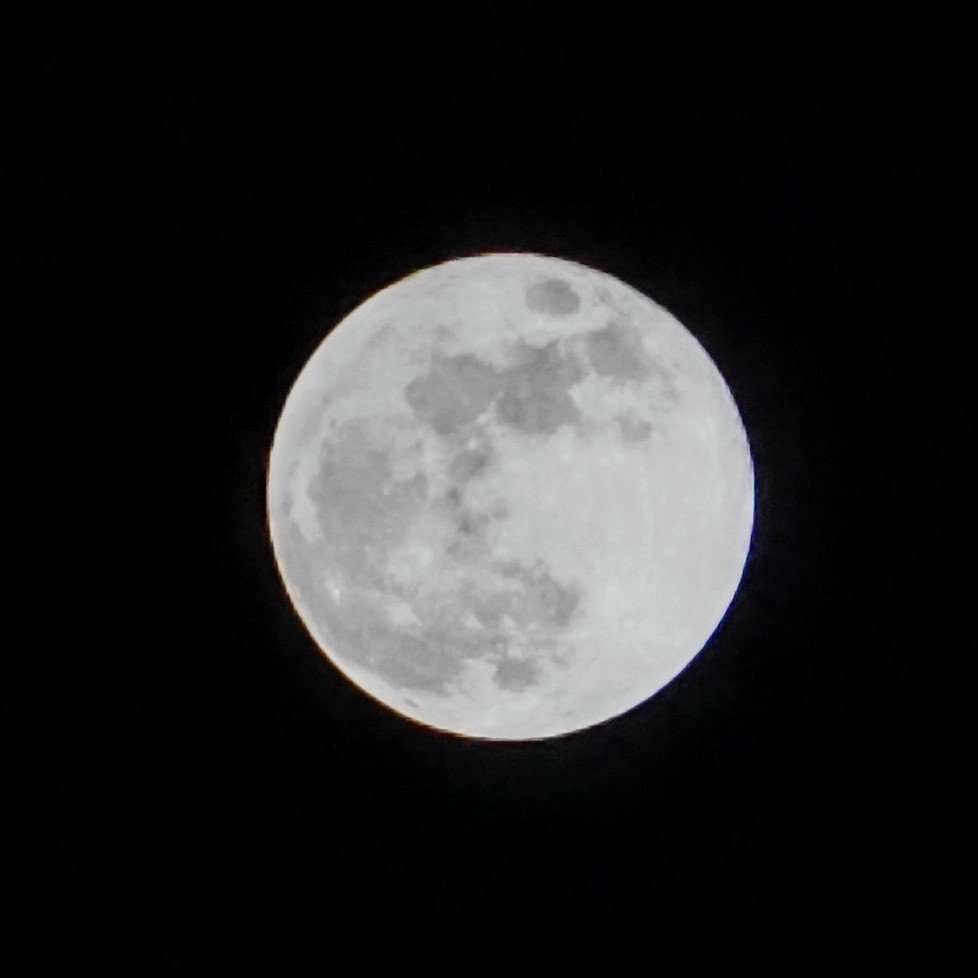Current Info for Observer
as of 07/27/2024 7:43 a.m.
Please login to view current observation details
General Info
as of 07/27/2024 7:43 a.m.
| Type | Moon |
| Constellation | Pisces |
| Orbits | Earth |
| Right ascension | 1:28:05.41 (Hours) |
| Declination | 10:42:09.7 (Deg) |
| % illuminated | 59.185 |
| Mass | 7.3477e+22 kg |
Earth's only natural satellite | |
☉ Solar Masses ⊕ Earth Masses j Jupiter Masses
Seestar S50
100 points
Nom de l'objet Lune
Date 2024-05-19
Heure 21:25
Nom du lieu Mirabel, Québec, Canada
Durée (min.)
Longueur de la pause (s)
Coordonnés du lieu 45,73
Magnitude qualité du ciel 20,23
Bortle 5
Pourcentage lunaire 89
Nuages 20
Seeing 40
Transparence 30
Vent 4
Température 20
Température ressentit 22
Point de rosée 17
Humidité 69
Instrument Seestar S50
Filtre Aucun
Type d'objet Satellite naturel
Dimension Grande (comparée à d'autres objets astronomiques visibles avec un télescope amateur)
Diamètre estimé La Lune occupe environ 50% du champ de vision du Seestar S50 à faible grossissement.
Bords de l'objet Nets sur le côté éclairé, légèrement flous sur le côté ombragé en raison du relief lunaire
Forme de l'objet Circulaire
Couleur de l'objet Incolore (principalement blanc et gris, avec des nuances de jaune pâle sur certaines régions)
Densité Forte (surface lunaire dense et détaillée)
Nombre d'étoiles estimé Aucune étoile visible à côté de la Lune en raison de son éclat
Apparence Homogène sur les zones planes, avec des cratères, montagnes et mers lunaires bien distincts. Les zones de terminator (la frontière entre le jour et la nuit sur la Lune) montrent un relief accentué.
Éclat global Brillante
Appréciation Objet remarquable. La Lune, avec ses détails fascinants de cratères, mers et montagnes, offre toujours un spectacle impressionnant. L'observation est à refaire sous différentes phases lunaires pour explorer d'autres aspects du relief lunaire.
Object Name: Moon Date: 2024-05-19 Time: 21:25 Location Name: Mirabel, Quebec, Canada Duration (min.): Pause Length (s): Location Coordinates: 45.73 Sky Quality Magnitude: 20.23 Bortle Scale: 5 Lunar Percentage: 89% Clouds: 20% Seeing: 40% Transparency: 30% Wind: 4 Temperature: 20°C Feels Like Temperature: 22°C Dew Point: 17°C Humidity: 69% Instrument: Seestar S50 Filter: None Object Type: Natural satellite Size: Large (compared to other astronomical objects visible with an amateur telescope) Estimated Diameter: The Moon occupies about 50% of the Seestar S50's field of view at low magnification. Object Edges: Sharp on the illuminated side, slightly blurry on the shadowed side due to lunar terrain Object Shape: Circular Object Color: Colorless (mainly white and gray, with shades of pale yellow in some regions) Density: High (dense and detailed lunar surface) Estimated Number of Stars: No stars visible next to the Moon due to its brightness Appearance: Homogeneous on flat areas, with well-defined craters, mountains, and lunar seas. The terminator regions (the border between day and night on the Moon) show enhanced relief. Overall Brightness: Bright Appreciation: Remarkable object. The Moon, with its fascinating details of craters, seas, and mountains, always offers an impressive view. The observation should be repeated under different lunar phases to explore other aspects of the lunar terrain.
70mm Refractor
100 points
Celestron Omni XLT 150
0 points
Finally saw the moon through the telescope. The Grimaldi crater had tons of detail and looked very 3D. I did not expect to see so many craters.
Celestron SkyMaster 15x70 Binoculars
100 points
Got a good luck with the binoculars today, nice detail at the terminator.
Generate a finder chart
The following form will generate a PDF finder chart suitable for printing using to locate objects in the sky with your telescope!
The Date is only really useful for solar system objects, as deep space objects move measurably only on a galactic timescale.
The larger the F.O.V (field of view), the more "zoomed out" the object will appear. It can be helpful to print several charts of the same object with different field of views.
Limiting the magnitude (remember, lower magnitude means brighter!) of stars and objects can make sure your chart is not cluttered with dim objects that you may not be visible to you anyway. The defaults are good, but try experimenting with raising and lowering the values.
Please login to post comments


